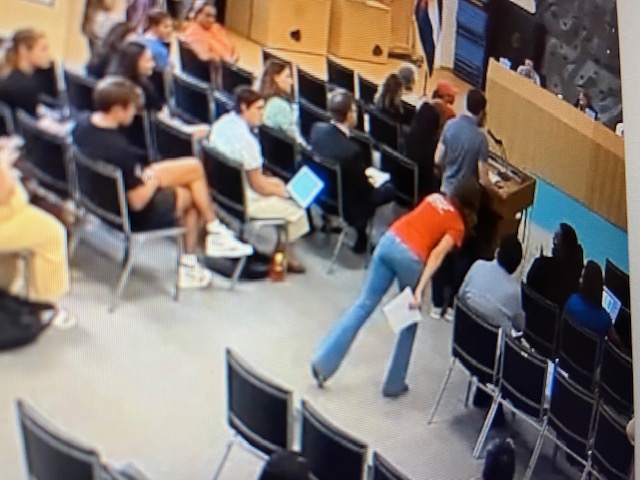UPDATE: This story has been updated with information about DPS’ weighted per-pupil funding, which steers additional money to schools with greater need.
In Denver Public Schools, a district that prides itself on promoting equity, a massive disparity in parent fundraising between overwhelmingly white, affluent elementary schools and elementary schools with few white students stands out like a sore thumb.
Records obtained through a Colorado Open Records Act (CORA) request show that of the 20 Denver elementary schools where parent fundraising brought in the most money, 18 had student populations that were at least two-thirds white. Those schools brought in on average $439,940 per school over the past three years.
To put this in context, district-wide, 29 percent of students are white.
By contrast, of the 20 schools that brought in the least outside funding, 14 had fewer than 10 percent white students. Those 20 schools brought in an average of $9,513 per school total over the past three years.
In a caveat to its CORA response, DPS pointed out that the fundraising totals released in a spreadsheet to Boardhawk do not represent a full accounting. The numbers represented “what has been donated by these organizations (Parent Teacher Associations and Parent Teacher Organizations) to DPS.”
Nor could the district break out what funds were raised by parent organizations, and which came to the school through “small, direct-to-school private grants.”
Still, the data provide a revealing glimpse into the massive inequities caused by disparate fundraising capabilities in schools with either many or few white students.
On Monday, the Denver school board will vote on a budget for next school year that includes $65 million in cuts made necessary by the COVID-19-caused economic downturn. In a letter sent recently to board members, a dozen advocacy groups urged the board to focus on equity as it makes its tough budget-cutting decisions:
“The fact of the matter is that students at schools with privileged parent organizations that can raise thousands of dollars will be able to avoid the pain of drastic cuts. Any decisions that the board makes will fall disproportionately on the students and families who can least afford to be affected by them and have been most affected by the health and economic crisis. If the board is not mindful, these one-time cuts will lead to permanent learning loss, and economic damage that will resonate for decades, further exacerbating current inequities. Denver overwhelmingly is on the West Steps and peacefully marching through our streets asking for true equality, now is the time to budget in alignment with that call to action.”
A group of parents in the soon-to-be-renamed Stapleton neighborhood, home to three of the top fundraising schools, has formed to address equity issues, as part of a broader push toward “acknowledging and affirming the equal humanity of our black brothers and sisters.” One proposal put forth by the group is to “share our schools’ resources: PTO funds at all Stapleton schools are shared 50/50 with a sister school in a predominantly Black neighborhood, and we build intentional community across both schools.”
Here are the 20 schools with highest fundraising totals between 2018 and 2020:
| School | Total raised 2018-20 | Percentage white students |
|---|---|---|
| Slavens K-8 | $1,151,493 | 79 |
| Bromwell Elementary | $709,377 | 73 |
| Park Hill Elementary | $577,382 | 75 |
| Westerly Creek Elementary | $548,182 | 70 |
| Cory Elementary | $539,903 | 75 |
| Steele Elementary | $526,405 | 79 |
| Swigert International | $450,019 | 72 |
| University Park Elementary | $408.09 | 67 |
| William Roberts K-8 | $351,096 | 75 |
| Steck Elementary | $346,503 | 69 |
| Polaris Elementary | $340,513 | 72 |
| Asbury Elementary | $338,473 | 67 |
| Teller Elementary | $335,126 | 71 |
| Lincoln Elementary | $296,999 | 71 |
| Creative Challenge Comm. | $296,521 | 81 |
| Carson Elementary | $292,009 | 74 |
| Academia Sandoval | $278,965 | 33 |
| Lowry Elementary | $272,151 | 36 |
| Southmoor Elementary | $256,519 | 65 |
| McAuliffe International | $255,458 | 64 |
And here are the 20 elementary schools with the lowest fundraising totals between 2018 and 2020:
| School | Total raised 2018-20 | Percentage white students |
|---|---|---|
| Escalante-Biggs Academy | $1,940 | 8 |
| Lena Archuleta Elementary | $2,402 | 5 |
| College View Elementary | $2,668 | 5 |
| Marrama Elementary | $3,737 | 7 |
| Columbine Elementary | $5,843 | 24 |
| Johnson Elementary | $5,988 | 5 |
| Kaiser Elementary | $7,549 | 26 |
| Force Elementary | $8,308 | 6 |
| Knapp Elementary | $9,004 | 3 |
| Talent Development/Greenlee | $9,788 | 12 |
| Cowell Elementary | $10,696 | 5 |
| Castro Elementary | $10,703 | 5 |
| Ashley Elementary | $12,415 | 11 |
| Munroe Elementary | $12,472 | 3 |
| Bradley International | $12,841 | 56 |
| McMeen Elementary | $12,997 | 30 |
| Barnum Elementary | $13,554 | 4 |
| Howell K-8 | $15,052 | 1 |
| Green Valley Ranch Elem. | $15,973 | 11 |
| Maxwell Elementary | $16,331 | 3 |
Viewed through a socio-economic rather than a racial lens, the numbers look equally stark. Schools where fewer than 20 percent of students qualified for federally subsidized lunches raised on average 14 times the amount raised by schools where more than half of students qualified for subsidized lunches.
Wealthier schools, with predominantly white students, often use most of their fundraising dollars to hire additional teachers or para-professionals. Some of those teachers specialize in art or music, giving students from these wealthy and almost uniformly high-performing schools another advantage over their peers from more economically challenged schools.
“Let’s by all means have these conversations about equity,” said Ariel Smith, executive director and co-founder of Transform Education Now, a Denver-based parent advocacy organization. Given that DPS’ budget hole is likely to grow even deeper over the next few years, “if we don’t get this right, it’s the schools without big, powerful PTAs that will lose out.”
UPDATE: DPS uses weighted student funding to steer resources to students with the greatest needs. This means that Slavens, the top fundraiser (and one of the district’s most affluent schools) receives from the district $5,959 in ‘principal managed funding’ per student, while Escalante-Biggs Academy, which raised the least money, receives $10,625 per student. While the weighted funding more than compensates for fundraising disparities, the fact remains that the whiter, more affluent schools often offer enrichment opportunities missing from lower-income schools.
In any event, “the additional per-pupil funding isn’t supposed to compensate for fundraising disparities, it is designed for kids coming in at different places and having different needs,” said Van Schoales, president of the education advocacy organization A+ Colorado. Important questions to ask, Schoales said, are “what are the experiences of a student at Slavens versus a student at Escalante-Biggs? What explains the differences? Is it a resource question, or something else?”




